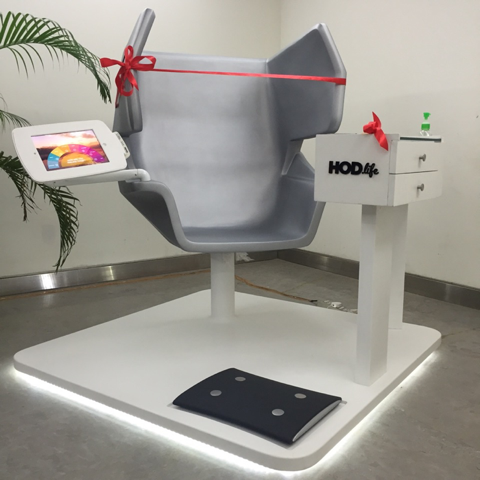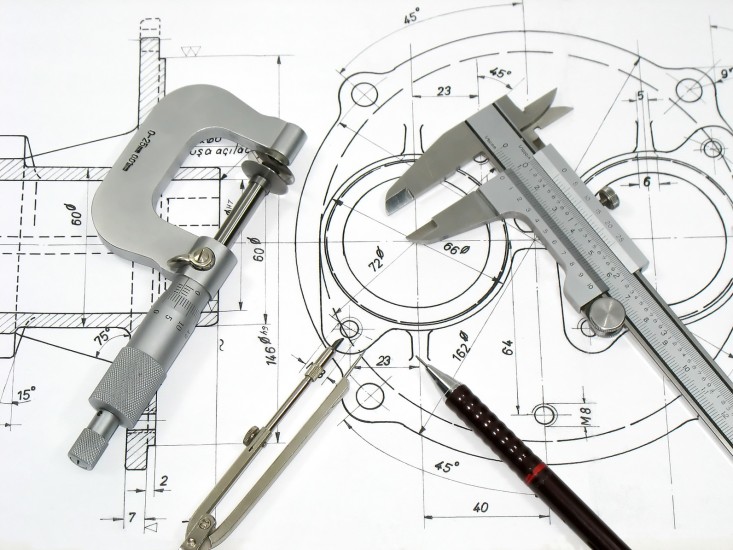The future sure holds a lot of great things, but they need to be designed first. Now that’s where a product designer comes in. Innovation and Product Design can definitely be considered as a Job of the Future for this reason
Product design is all about the creation new three-dimensional products by a proficient process of generation of ideas, and their development and evaluation. Product designers are required to have an understanding of the relationship between art, science and technology, along with an ability to manipulate each of these things in various ways to create new products.
WHAT DOES PRODUCT DESIGN INVOLVE?
Good design can easily be called the backbone of our daily lives. Product innovations can fundamentally modify the way we carry out our easy everyday tasks. At a deeper level, innovations in designs can result in a revolution in the way we intermingle with our environmental ecosystems, have an impact on our social experiences or even save our lives.
A career in product design provides you with an opportunity to make a real difference. The process of cultivating a design, from the early concept stages to a commercially feasible solution appropriate for mass production, and being part of the entire creation process, from concept to final tests can also give product designers a large amount of job satisfaction.
Product design careers cover an extremely broad spectrum of industries. Therefore, the importance on technical or aesthetic design expertise can differ from role to role. More technical projects will need a superior understanding of engineering, where function may dictate form. More artistic projects will tend to focus on form and usability.
Product design needs a huge deal of understanding of both materials and manufacturing processes. A product designer will be expected to stay alert of new expansions in these fields, as this will help them in their day-to-day work and drive innovation in their corporation.
WHAT DO PRODUCT DESIGNERS DO?
A product designer will normally work as part of a team, often encompassing of junior and senior designers. These gentlemen all report to a design manager or creative lead. Most product designers rise up through these ranks of mounting accountability, as they demonstrate themselves as not only capable designers and innovative thinkers, but also good team players and communicators. Commercial product design can fall into two major categories:
* In-house companies, where all design is lead and managed by a marketing department within that company
* Consultancy-based design, where design is lead by external clients’ needs.
Despite these differences, all projects undertaken come from the common ‘design brief’, which is directed by market research into the product field.
Throughout the project, regular meetings will be planned and presentations will be made to guarantee the project is advancing in the right direction. Sometimes these meetings can mean fundamental shifts in the design are required, and a product designer’s skill lies in their ability to weigh these comments and use them back into their designs.
A designer may use many different tools to realise their design effectively, varying from advanced computer modelling to more traditional workshop techniques. For example, a design can start from a pencil sketch, then be developed using foam models that lead to a working rig before a computer is even used.
In parallel to this, the team dynamic provides several opportunities to exchange and brainstorm ideas, and final designs will often be moulded and driven by a compilation of the team’s contributions.
Time management and planning is another crucial feature to a product designer’s role. A product’s market launch time will dictate this, and it is up to the designer to arrange their project time to guarantee important targets are met. This can vary from internal management of tasks, to coordinating with external suppliers and manufacturers.

Founders Ankit Khambati, Bhavisha Bafna, Kuldeep Mohan Ponnada and Kabir Agarwal, speak to us about HOD.life, a revolutionary new product in accessible healthcare
HOW DID YOU COME UP WITH THE CONCEPT FOR HOD.LIFE?
We used to manage corporate health & wellness programs for a large MNC. Companies were mainly offering services from hospitals and diagnostic centers disguised as a wellness program. We learnt that while many health tools were made available, these programs were staggered, had low participation, poor retention and didn’t drive much value to the beneficiaries. A ‘Wellness Solution’ was the unmet need, and it had to be IoT enabled, available through multiple touch points in a person’s life and driving engagement through data-driven intelligence and most importantly, building aspirational goals for wellbeing. The HOD.life health station has come to life from a napkin sketch in 2014 to live corporate
deployments today.
TELL US A LITTLE MORE ABOUT THE HOD. LIFE KIOSK. HOW DOES ONE USE IT?
HOD.life (envisioned ‘health on demand’) is a 360 degree technology solution for health and wellbeing management. A 20 minute session at HOD.life’s connected health station, attented by a trained HOD pilot, provides a comprehensive preventive health check which includes body analytics like weight, BMI and body fat, vitals like temperature and pulse, oxygen saturation, lung function, blood sugar, blood pressure, cholesterol, ECG and more. Based on each individual’s report, personalized recommendations for health and wellness products are provided, and experts are available on call for coaching and consultations. A personal health score called the MEW (Motivation, Engagement, Wellbeing) score keeps ticking up as users return to the station to set their goals, track their health and connect with experts. Early users are thrilled about how HOD.life’s ‘Health on Demand’ offering could change the way they managed their fitness, health and well-being. Clocking 2.3 users per hour per health station deployment, loaded with thousands of health data points, we are now on our way to reengage users for targeted interventions for weight/fitness, mental health and managed care for chronic diseases. With an overwhelming response to the launch of our ‘Make in India’ product, we at HOD.life are focused to ‘be the change we want to see in the world’. Currently, more than a dozen HOD cocoons are already placed at various corporations. We are also looking into empowering common people by employing them as HOD pilot. Around 10,000 such jobs can be availed with this new revolution.

HOW DID YOU FACE THE CHALLENGES DURING THE CREATION OF HOD.LIFE?
Contrary to the conventional start-ups, we had gotten a very active, enthusiastic and passionate group of advisors on board on Day 1 of the project. They helped us meet our challenges and solve them very quickly. Our idea was very clear and the skill was present. For us, it was only the question of how fast we can build the prototype and get it into the market. The fact was that we have been in the industry and have had experience in the field to show the unmet need, so we didn’t really have to go about shopping for investors and selling the idea to too many people. It’s an entrepreneur’s nightmare to have to go to like a 100 people and change the idea according to the whims of the investors, which may not even be required, because the product is already viable. Our advisors and investors recognised this early and we were put straight to work.
HOW DO YOU SEE ACCESSIBLE HEALTHCARE IN THE FUTURE?
HOD.life in every home! MEW Score for every person, company, institution, country and region.
Volume 5 Issue 10



























